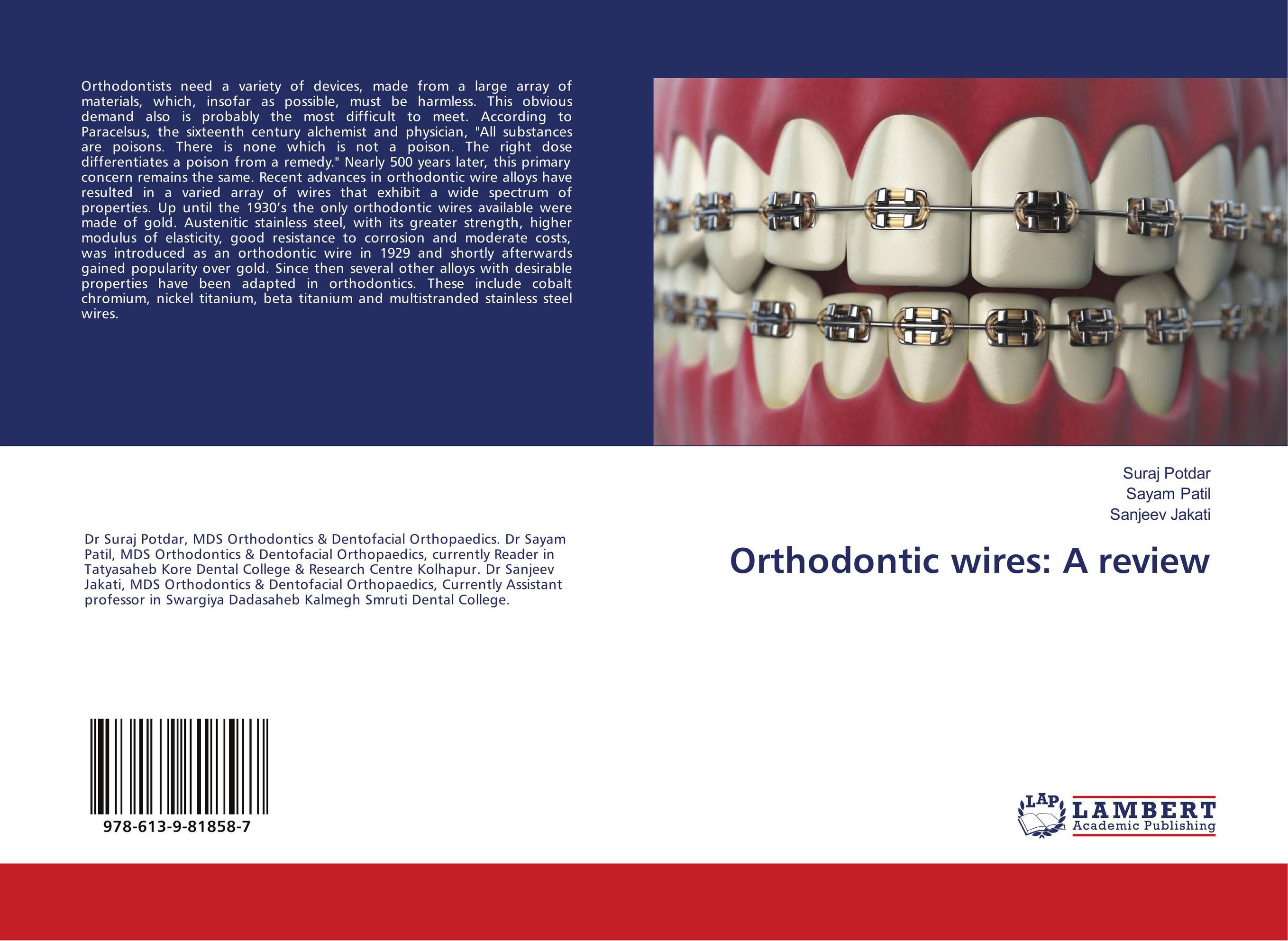| Поиск по каталогу |
|
(строгое соответствие)
|
- Профессиональная
- Научно-популярная
- Художественная
- Публицистика
- Детская
- Искусство
- Хобби, семья, дом
- Спорт
- Путеводители
- Блокноты, тетради, открытки
Orthodontic wires: A review.

В наличии
| Местонахождение: Алматы | Состояние экземпляра: новый |

Бумажная
версия
версия
Автор: Suraj Potdar,Sayam Patil and Sanjeev Jakati
ISBN: 9786139818587
Год издания: 2018
Формат книги: 60×90/16 (145×215 мм)
Количество страниц: 76
Издательство: LAP LAMBERT Academic Publishing
Цена: 21841 тг
Положить в корзину
| Способы доставки в город Алматы * комплектация (срок до отгрузки) не более 2 рабочих дней |
| Самовывоз из города Алматы (пункты самовывоза партнёра CDEK) |
| Курьерская доставка CDEK из города Москва |
| Доставка Почтой России из города Москва |
Аннотация: Orthodontists need a variety of devices, made from a large array of materials, which, insofar as possible, must be harmless. This obvious demand also is probably the most difficult to meet. According to Paracelsus, the sixteenth century alchemist and physician, "All substances are poisons. There is none which is not a poison. The right dose differentiates a poison from a remedy." Nearly 500 years later, this primary concern remains the same. Recent advances in orthodontic wire alloys have resulted in a varied array of wires that exhibit a wide spectrum of properties. Up until the 1930’s the only orthodontic wires available were made of gold. Austenitic stainless steel, with its greater strength, higher modulus of elasticity, good resistance to corrosion and moderate costs, was introduced as an orthodontic wire in 1929 and shortly afterwards gained popularity over gold. Since then several other alloys with desirable properties have been adapted in orthodontics. These include cobalt chromium, nickel titanium, beta titanium and multistranded stainless steel wires.
Ключевые слова: orthodontics, wires



